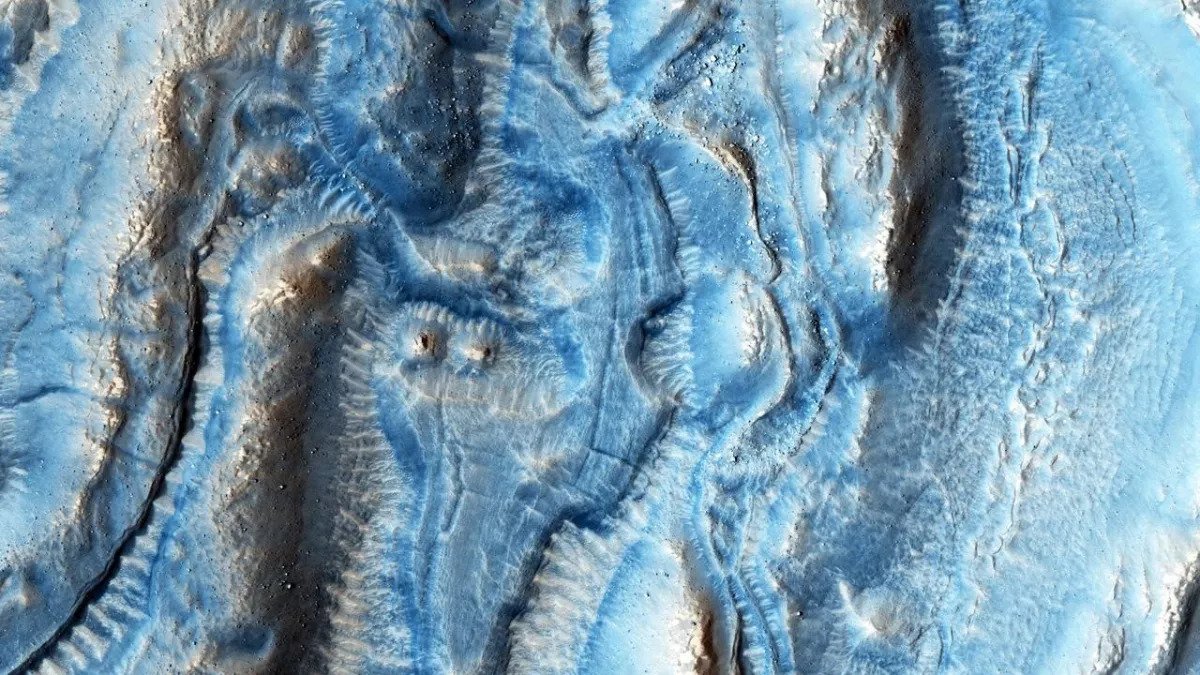Scientists have come to the conclusion that the glaciers that existed on Mars before it finally turned into a desert were still moving. In this they were helped by the creep deformation of the ice.

Did the Martian glaciers move?
Once upon a time there was liquid water on Mars. Then the climate changed and it formed glaciers. Over millions of years, the atmosphere became thinner and drier and giant fields of ice evaporated. But their existence should leave traces on the surface of the red planet.
On Earth, glaciers move all the time. This is due to the gravity of the planet, which compresses a giant block of ice. Melting occurs inside it, water seeps down and creates a layer that ensures sliding.
But all the same, a moving glacier leaves marks in its path that are visible even after thousands of years. The North of America and Eurasia store furrows and stones that were left behind by the last icy day. Many lakes in these areas were formed in this way.
But there are no marks on the surface of Mars indicating the movement of glaciers. Because of this, scientists have long believed that due to low gravity, water weakly seeped under the ice sheet and quickly flowed out of it. As a result, the interlayer that provides sliding was not formed.
Creep deformation
But researchers from the University of Nantes in France still tried to prove that the Martian glaciers could still move. They compensated for the lack of water by the phenomenon of creep deformation. That is, the ice itself simply changed shape under the influence of gravity, moving forward.
In this case, the traces on the surface should remain completely different from those on Earth. They should have the shape of ridges and valleys with shallow undulating channels. And there are such landforms on Mars, for example, in the area of the Argyre basin in its southern hemisphere.
To prove this theory, the researchers pointed to a place on Earth where glaciers demonstrate creep deformation. This happens in some arid regions of Canada with a very dry climate, and these landforms are really observed there.
Scientists believe that under the glaciers of Mars, when they were still on the planet, some kind of life could have been preserved. After all, a small amount of water from their melting was still formed and it provided conditions for the existence of not only bacteria, but also multicellular organisms.
According to www.space.com
Follow us on Twitter to get the most interesting space news in time
https://twitter.com/ust_magazine
